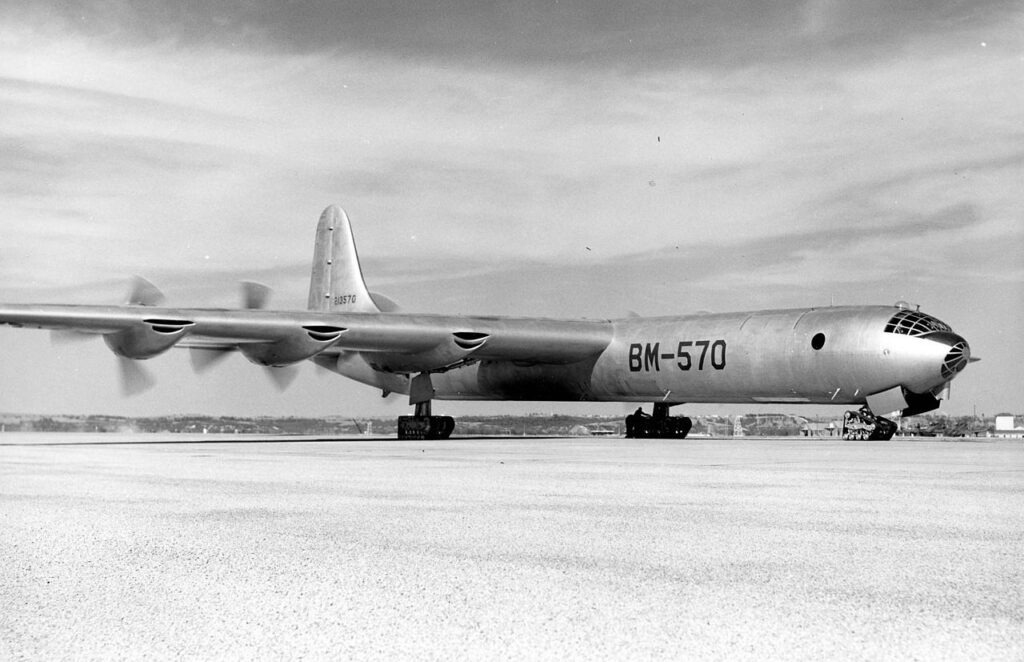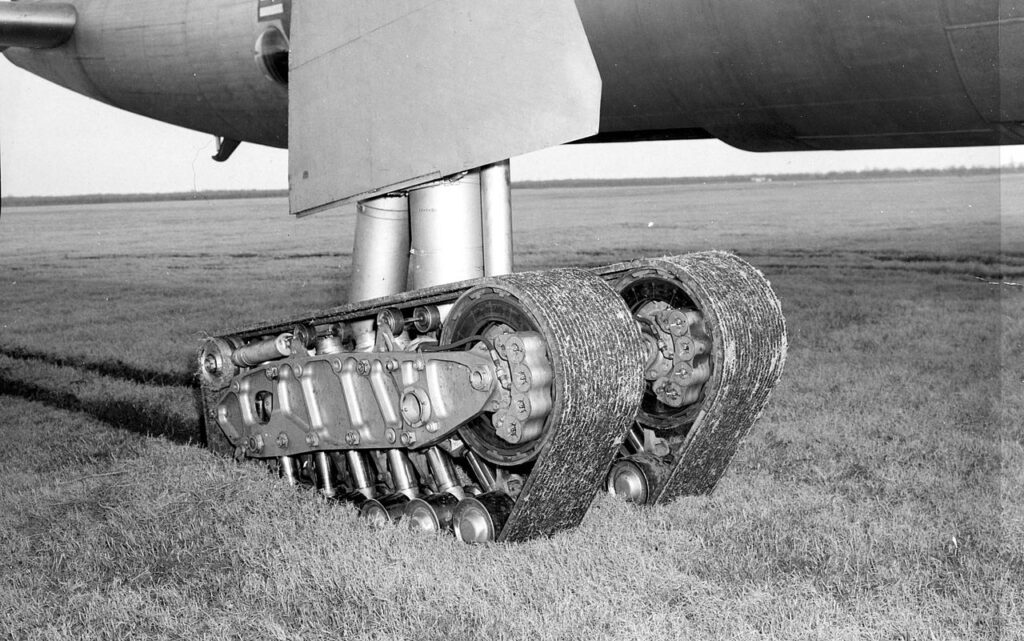The SAC briefly used the XB-36 as a training aid in June 1948 while awaiting the production of the 7th Bombardment Group’s first B-36A
Consolidated Vultee (later Convair), in response to the US Army Air Forces’ need for a strategic bomber with an intercontinental range, created the B-36 during World War II. The B-36’s first flight took place in August 1946, and the Strategic Air Command received its first operational B-36 in June 1948.
After initial manufacturer’s trials, the USAF, which was founded in September 1947, oversaw the next phase of testing at Wright Field, as stated by Peter E. Davies in his book B-36 “Peacemaker” Units of the Cold War. The XB-36 briefly served as a training aid for SAC in June 1948 while it awaited the 7th Bombardment Group’s (BG) first production B-36A. After being brought back to Fort Worth, the aircraft was tested in 1950 using a different, wholly experimental set of landing gear.
The Dowty Equipment Corporation created a track-type landing gear that employed pairs of belts running around sets of roller and idler wheels, similar to a small tank, by adapting a design by tank suspension designer J Walter Christie. They were meant to reduce undercarriage pressure on a runway and allow heavy aircraft to land at unimproved airfields.
Although Dowty’s version weighed three times as much as standard landing gear, it had been tested in an A-20C bomber with success in 1943. The gear performed well on snowy and soft terrain but not on the sand when Firestone-built variants were tested in a P-40 fighter and a C-82A transport aircraft. Although no practical use was expected other than when the aircraft took off from Arctic staging bases, the B-36 was proposed as the recipient in November 1947. The B-50A, which entered service four months before the B-36A, was also planned to have tracked gear.

For the experimental installation, the XB-36 was selected primarily to test the use of tracked gear on a variety of heavy aircraft, including the heaviest. The three intricate components, produced by Cleveland Pneumatic Tool Company and Goodyear Tire and Rubber Company, added at least 5000 lbs to the 16,000 lbs of the current landing gear while lowering the pressure on the runway from 156 lbs per square inch to just 57 lbs.
On March 26, 1950, a few taxi tests using the “roller skates” were conducted, but the crew was disturbed by the tracks’ terrible, high-pitched screeching and vibrating.
After 30 flights by January 30, 1952, the XB-36’s short career as a testbed had come to an end, and the plane was grounded at Fort Worth where it was tragically destroyed on the fire dump. The prototype had aided in removing several barriers to the aircraft’s serial manufacturing, paving the way for what Gen LeMay referred to as his “interim bombers.” In such situation, the B-36 came after the B-29 as a relatively short-term project before the B-47 and B-52, which were jet-powered, arrived.
B-36 ‘Peacemaker’ Units of the Cold War is published by Osprey Publishing and is available to order here.

Photo by U.S. Air Force

